
Edna Ferber was an American novelist, short story writer and playwright. Her novels include the Pulitzer Prize-winning So Big (1924), Show Boat, Cimarron, Giant and Ice Palace (1958), which also received a film adaptation in 1960. She helped adapt her short story "Old Man Minick", published in 1922, into a play (Minick) and it was thrice adapted to film, in 1925 as the silent film Welcome Home, in 1932 as The Expert, and in 1939 as No Place to Go.

Barbara Stanwyck was an American actress, model and dancer. A stage, film, and television star, during her 60-year professional career she was known for her strong, realistic screen presence and versatility. She was a favorite of directors, including Cecil B. DeMille, Fritz Lang, and Frank Capra, and made 85 films in 38 years before turning to television.

Ruth Elizabeth "Bette" Davis was an American actress of film, television, and theater. Regarded as one of the greatest actresses in Hollywood history, she was noted for her willingness to play unsympathetic, sardonic characters and was known for her performances in a range of film genres, from contemporary crime melodramas to historical and period films and occasional comedies, although her greatest successes were her roles in romantic dramas. She won the Academy Award for Best Actress twice, was the first person to accrue ten Academy Award nominations for acting, and was the first woman to receive a Lifetime Achievement Award from the American Film Institute. In 1999, Davis was placed second on the American Film Institute's list of the greatest female stars of classic Hollywood cinema.
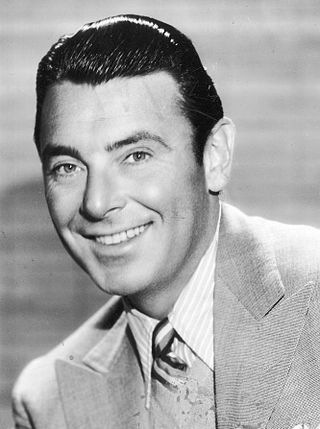
George Brent was an Irish-American stage, film, and television actor. He is best remembered for the eleven films he made with Bette Davis, which included Jezebel and Dark Victory.

A Stolen Life is a 1946 American drama film starring Bette Davis, who also produced it. The film, based on the 1935 novel A Stolen Life by Karel Josef Benes, was directed by Curtis Bernhardt. Among the supporting cast are Glenn Ford, Dane Clark, Peggy Knudsen, Charlie Ruggles, and Bruce Bennett. It is a remake of the 1939 British film Stolen Life starring Elisabeth Bergner and Michael Redgrave.

Selina is a feminine given name, considered either a variant of Selene, the goddess and personification of the Moon in Greek mythology and religion, or a spelling variation of the name Celina, which is derived from the Roman name Cecilia, referring to a woman from the Caecilia gens. This spelling variant had begun to be used in the United Kingdom by the 1600s.

So Big is a 1924 novel written by Edna Ferber. The book was inspired by the life of Antje Paarlberg in the Dutch community of South Holland, Illinois, a Chicago suburb. It was a best-seller in the United States and won the Pulitzer Prize for the Novel in 1925.

Another Man's Poison is a 1951 British drama film directed by Irving Rapper and starring Bette Davis, Gary Merrill and Emlyn Williams. The screenplay by Val Guest is based on the play Deadlock by Leslie Sands.
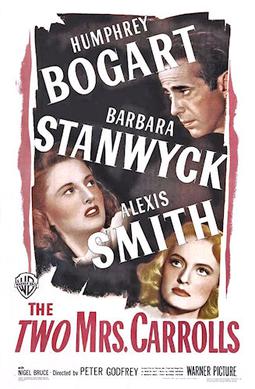
The Two Mrs. Carrolls is a 1947 American mystery film noir directed by Peter Godfrey and starring Humphrey Bogart, Barbara Stanwyck, and Alexis Smith. It was produced by Mark Hellinger from a screenplay by Thomas Job, based on the 1935 play by Martin Vale.
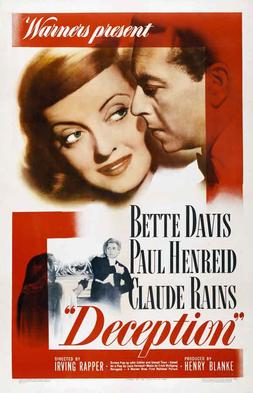
Deception is a 1946 American film noir drama released by Warner Brothers and directed by Irving Rapper. The film is based on the 1927 play Monsieur Lamberthier by Louis Verneuil. The screenplay was written by John Collier and Joseph Than. It stars Bette Davis, Paul Henreid, and Claude Rains, who had also appeared together in the highly successful Now, Voyager (1942), which was also directed by Rapper.
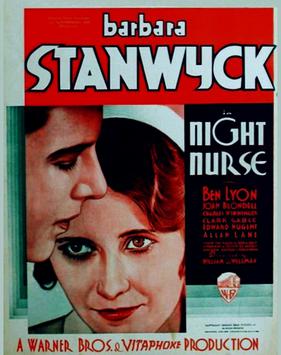
Night Nurse is a 1931 American pre-Code crime drama mystery film produced and distributed by Warner Bros. directed by William A. Wellman, and starring Barbara Stanwyck, Ben Lyon, Joan Blondell and Clark Gable. The film is based on the 1930 novel of the same name by Dora Macy, the pen name of Grace Perkins. The film was considered risqué at the time of its release, particularly the scenes where Stanwyck and Blondell are shown in their lingerie. Clark Gable portrays a viciously violent chauffeur who is gradually starving two little girls to death after having already purposely run over their slightly older sister with a limousine, killing her.

Barbara Stanwyck was a prolific American actress and dancer who appeared in a total of 95 theatrically released full-length motion pictures. Orphaned before she was old enough to attend school, she became fascinated by the burgeoning film industry, and actress Pearl White in particular, whom she would mimic on the playgrounds. "Pearl White was my goddess, and her courage, her grace, and her triumphs lifted me out of this world."

Ex-Lady is a 1933 American pre-Code comedy/drama film directed by Robert Florey. The screenplay by David Boehm is a remake of the Barbara Stanwyck film Illicit (1931), both crediting a story by Edith Fitzgerald and Robert Riskin. The film focuses on a pair of lovers, commercial illustrator Helen Bauer and advertising writer Don Peterson, who have been living together quite happily for some time. One night, after hiding in Helen's bedroom until their party guests have all left, Don announces that he is tired of sneaking around. He wants marriage—and possibly children—and Helen finally agrees, although she is afraid that it will wreck their relationship. Her predictions of trouble—increased by the stresses of opening their own advertising agency—come true, but in the end, with the serendipitous intervention of their perpetually inebriated friend, Van, they reconcile and resume the mixed blessings of wedded bliss.
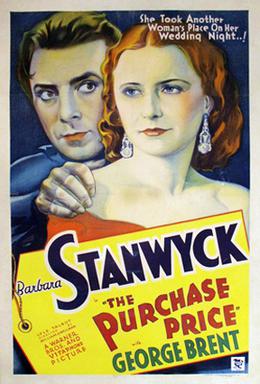
The Purchase Price is a 1932 pre-Code American romantic drama film directed by William Wellman and starring Barbara Stanwyck, George Brent and Lyle Talbot. Adapted from the novel The Mud Lark by Arthur Stringer, with a screenplay by Robert Lord, the film is about an attractive nightclub singer who leaves her criminal boyfriend and becomes the mail-order bride of a humble farmer.
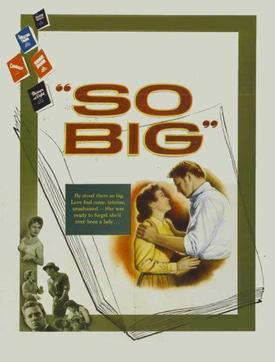
So Big is a 1953 American Drama Western film directed by Robert Wise and starring Jane Wyman, Sterling Hayden and Nancy Olson.

Theresa Harris was an American television and film actress, singer and dancer.

So Big is a 1924 American silent film based on Edna Ferber's 1924 novel of the same name which won the Pulitzer Prize for the Novel in 1925. It was produced by independent producer Earl Hudson the film and distributed through Associated First National. Unseen for decades, it is considered to be a lost film. Only a trailer survives at the Library of Congress.
Antje Paarlberg née Waagmeester is known as the inspiration for the novel So Big. Chicago area author Edna Ferber used South Holland, Illinois, its pioneers and onion farms as background for her 1924 novel about an ambitious widow in a Midwestern Dutch American farming community. The resilience of Antje Wagemeester Paarlberg, a widowed immigrant and determined pioneer, was allegedly the inspiration for the main character Selina Peake DeJong.

Illicit is a 1931 American pre-Code drama film directed by Archie Mayo and starring Barbara Stanwyck, James Rennie, Ricardo Cortez, and Natalie Moorhead. Based on a play by Edith Fitzgerald and Robert Riskin, the film is about a young couple living together out of wedlock because the woman does not believe in marriage. When they finally get married, both become unfaithful to each other. Illicit was produced and distributed by Warner Bros.




















